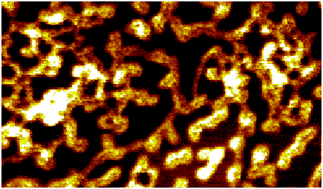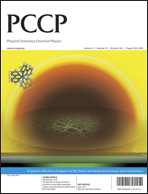In situ evaluation of anticancer drugmethotrexate–DNA interaction using a DNA-electrochemical biosensor and AFM characterization†
Abstract
An in situ evaluation of the dsDNA–methotrexate (MTX) interaction was performed by

- This article is part of the themed collection: Interfacial processes and mechanisms

 Please wait while we load your content...
Please wait while we load your content...